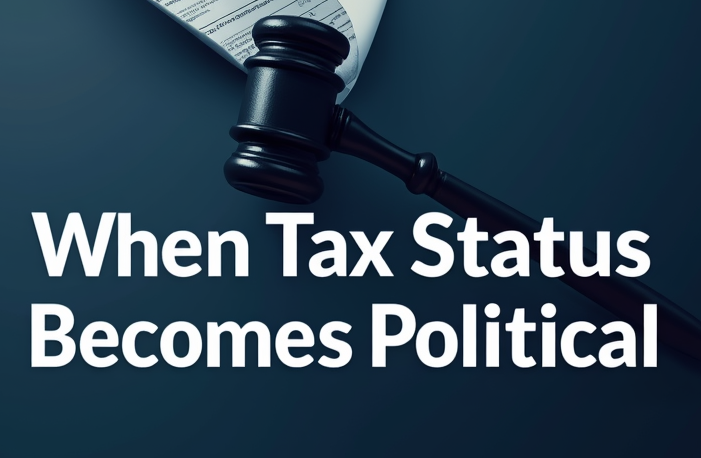Planning in an unplannable time
It’s somewhere in a desk drawer or in your computer’s subfolder’s subfolder. It’s been a source of shame. Not because of the work you put into it, which was significant and gallant, but because of the labels: best case scenario, likely scenario, and worst-case scenario.
You laugh at those labels now in your budget projections, sometimes laughing joyfully (digital! DRTV! mail!), sometimes laughing so you won’t cry (e.g., events and canvassing).
Don’t worry. You aren’t the only one. We all have that spreadsheet. As a community, we thought we had ceilings and floors; instead, we’re in some sort of HGTV nightmare where the contractor keeps saying “I’ve got something I need to show you.”
But we couldn’t have foreseen this, could we?
Yes and no. As far as I can tell, we’ve never had a global recession, global pandemic, and nationwide civil unrest at the same time. The closest competitors for this Triple Crown are 1918-1919 (H1N1 flu pandemic and Red Summer of 1919), 1968 (H3N2 flu pandemic and civil rights/anti-war protests), and 2003 (SARS and anti-Iraq wars protests). In fairness, these years also had major wars ongoing, but that is, knock on wood, a different trifecta.
In a year where the word “uncharted” has been exhausted from its workout, we are now off the end of the map where there be monsters.
But we can consider disasters in our forecasting. For example, according to the IMF, there have been five global recessions in my lifetime: 1980–83, 1990–93, 1998, 2001–02, and 2008–09. That’s five times in 42 years. So if you are looking for a worst-case scenario, any given year there’s a 12% chance that a global recession will start if recent trends are to be believed.
As for disasters, Blackbaud labels these as impacting donor behavior from 2007 to 2017:
- Burma cyclone and China earthquake
- Haiti earthquake
- Japan earthquake & tsunami
- Horn of Africa famine
- Hurricane Sandy
- Government Shutdown and Typhoon Haiyan
- Winter Storm Juno
- Nepal Earthquake
- 2016 Presidential Election
- Hurricanes Harvey, Irma, and Maria
So if disasters are something that would shift resources to or away from your organization (or require additional resources), plan for them. I recently talked with one organization in California who said last year was abnormal because of the wildfires and mudslides. Sadly, one might as well say that it was an abnormal year in Seattle, what with the rain.
This would seem to say in a world where, literally and metaphorically, 100-year floods come every year, we should embrace planning nihilism: chuck the budget, bin the strategic plan, stare into the abyss, and vice versa.
Tempting, but let’s dispense solely with the bathwater. That’s the exercise of taking last year’s results calling it the normal scenario, adding X% calling it the best-case, and subtracting X% and calling it the worst-case. We can be well rid of this. If this year has taught us nothing, it’s that the best case and worst case aren’t.
There’s nothing wrong with pegging this year to last year to start. One needs priors. But we’ve been brainwashed by bad stats classes to think everything follows a bell curve.
There are three big reasons to abandon the illusion that things fit within normal bounds and normal distribution.
First, down is more likely than up. Take the same mail piece or email or DRTV spot and distribute it to the same people. What are the chances that people embrace it more than they did last year? Now what are the chances that there’s fatigue to that treatment? Exactly.
Similarly, a test is more likely to lose than win. I love me some testing (if you do too, please join me for the free TNPA Test of the Month calls where we can learn from other people’s tests), but there’s a reason your control is your control; it knocked off other comers to be king of the hill. Exhausted though it may be, it retains the high ground.
So, like the universe, our fundraising tends toward entropy and decay; we must be treadmill runners and move to stay in the same place.
Second, while it’s generally inadvisable to get one’s fundraising counsel from 80s bumper stickers, stuff happens. This can be good stuff and bad stuff; we must prepare for both. What would you do if your organization got an unexpected windfall donation? Or postal carriers went on strike? Or if 2020?
In short, we have fat-tail risks: things that seem very unlikely aren’t. A normal distribution behaves like a sharpshooter: the most likely outcome is she will hit the bull’s-eye and outcomes are grouped around it. We live in a power-law world. Picture here a blindfolded sharpshooter spun around and put next to an infinitely long wall. There’s still a grouping that’s very close to the median (one degree off doesn’t matter than much when you are a foot away from the wall), but when you are 179.9 degrees off, the bullet can travel a vast distance before grazing the wall.
Third, when stuff happens, more stuff happens and quickly. The previous great economic disaster happened because smart people forgot that when it rains, everyone gets wet. The assumption was that my likelihood of defaulting on my home loan had nothing to do with my neighbor’s when those are highly correlated. In our world, we assumed that if events revenue were down, maybe our increased canvassing presence would save us. Alas. Whether it’s Fukushima, the Titanic, Chernobyl, the banking system, or our fundraising, something going wrong makes something else even more likely to go wrong because of the additional pressure.
This can happen extremely quickly. Benoit Mandelbrot of fractal fame was able to accurately model the stock market when he realized that the chaos that moved through systems also moved through time. That’s why things can be very compressed, whether it’s a stock market crash or the Arab Spring uprooting leaders who were thought to be impervious. In other words, you aren’t dreaming; time does hold more events in it in times of chaos.
While this seems nearly unplannable, it instead speaks to our need to have robust thinking in scenario planning. This is the baby to the normal-distribution thinking’s bathwater. When you open your drawer and pull out a document, it’s far better to say “here’s the contingency plan for that” than “but this Excel spreadsheet said this isn’t happening.” As time moves more quickly, you will be glad for the planning you did when it wasn’t.
When marriage equity went before the Supreme Court, the Human Rights Campaign had planned for years on the policy side, to be sure. But they’d also planned for the full spectrum of decisions in their media outreach and their fundraising. When the Obergefell decision came down, they were ready. They were only ready for the scenario that happened because they’d planned for the scenarios that didn’t happen.
Even still, you can’t plan for everything. But even the exercise of thinking about what opportunities and threats may be helps you react to the ones that actually come. Organizations who already worked across siloes, thought of their donors across channels, and built an infrastructure of partners who can pull oars together do much better when it gets down to Apollo 13 “I don’t care what it was meant to do; I care what it can do” time.
The other counter-intuitive impact of this is that in times of crisis, you don’t want to have reserves (although some are necessary); you want to have supporters. We’ve seen those who’ve turtled in their shells to be the most harmed by events; those who acted decisively are already stronger because of it. This applies equally to organizations before times of crisis—investing in people who love you is an insurance policy that no government bond or index fund can match.
Nick Ellinger, Chief Brand Officer with Moore, was formerly editor and contributor to the Agitator blog. He ran Mothers Against Drunk Driving’s direct marketing program for a decade, where he discovered his passion to help the nonprofit sector break through the 2% of GDP individual giving ceiling we’ve seen for decades. You can enjoy more of Nick’s written perspective in his 2019 book The New Nonprofit, available on Amazon.




